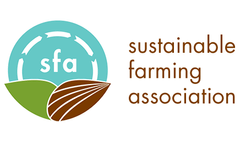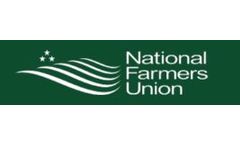Tillage Machine Articles & Analysis
30 articles found
Like any business, farmers must manage their farms with one foot in the present and the other in the future. It’s not enough to focus just on yields. We must also consider the impact those yields have on our fields. To ensure sustainable crop production, the implementation of a method like conservation tillage is vital. Conservation tillage is a tilling process that leaves at least ...
ByGrowers
In most of the US, this fall was a wet one. Chances are, you didn’t get much of a chance to get fall anhydrous in the ground. Beacuse of this, we wanted our agronomist, Barry Anderson, to answer a few of our burning questions related to fall nitrogen application. You may have missed the window this year, but here are some tips to keep in mind for next year. 1. At what rate/ ...
Most farmers are familiar with contests in which participants try to achieve the maximum yield of a crop from a given field. Fewer would be familiar with a contest in which participants’ total crop yield is divided by the amount of water they use—thus measuring their water use efficiency. That’s the kind of contest that Dr. Chris Henry and his colleagues at the University of ...
While reading this article I noticed #6 in the list includes cover crops and no till. We often talk about the very same benefits discussed in number six, but the important lesson here is the frame. First, the opening or introductory message is NOT about cover crops or soil health. As much as we all love to delve into those topics, the majority of producers do not (I know, hard to believe, but ...
Amisy Farming Machiney supplies all kinds of farming machines from threshing machines to tillage machines. About Amisy Machinery-Farming Machines Manufacturer Amisy Machinery was established in 2000, with years of experience in farming machines research and design. ...
A three‐year study was conducted on a corn field in Central Illinois, USA, to understand the fate and effects of an insecticidal formulation containing the active ingredients phostebupirim and cyfluthrin. The objectives of the current study were to 1) determine the best tillage practice (conventional versus conservation tillage) in terms of grain yields and potential environmental risk, 2) ...
While the U.S. Department of Agriculture (USDA) reports a 40 percent decline in U.S. cropland soil erosion rates from 1982 to 2007, recent trends appear to challenge this progress. Record prices for corn and soybeans have diverted acres out of conservation programs and encouraged intensive production on a wide scale. Tree lines are cleared and wet areas drained, turning 120-acre farms into ...
Our objective was to determine the effect of tillage system, crop rotation, and N fertilization on soil organic carbon (SOC) storage in the 0- to 90-cm profile in a long-term (20-yr) experiment established in 1986 on a rainfed Mediterranean Vertisol in southern Spain. The treatments studied were: conventional tillage (CT) vs. no-tillage (NT); five crop rotations: wheat (Triticum aestivum ...
The use of crop rotation systems involving winter-annual grazing can help peanut (Arachis hypogaea L.) producers increase profitability, although winter-annual grazing could result in excessive soil compaction, which can severely limit yields. We conducted a 3-yr field study on a Dothan loamy sand in southeastern Alabama to develop a conservation tillage system for integrating peanut with ...
Broomrape (Orobanche crenata Forsk.) causes considerable losses in faba-bean (Vicia faba L.) production in the Mediterranean region. The application of an ultra-low glyphosate rate at an early broomrape parasitic phase, i.e., tubercle development, is the most common control system. This study sought to determine the effect of tillage system and glyphosate application on broomrape infestation, ...
Reduced tillage results in lower production costs and thus may have economic advantages for farmers. However, yield penalties, specific yield risks, or higher nutrient requirements may counteract the positive effects of reduced tillage. This study investigates long-term tillage effects (moldboard plow, and deep and shallow chisel plow) and their interactions with N fertilizer input on yields and ...
Cover crops in direct seeding mulch-based cropping (DMC) systems can be an effective tool to optimize N management for crop production in the Brazilian cerrados. The objective of this study was to determine the effect of four cover crops on maize (Zea mays L.) grain yields in two fields that had been under DMC for 3 and 14 yr. We hypothesized that cover crops would optimize N supply to the maize ...
As economic conditions deteriorated, cotton (Gossypium hirsutum L.) producers have looked to improve profit margins by reducing inputs while maintaining yields. Pairing the yield benefits from early planting with the input reductions from conservation tillage might help accomplish those goals. The objective was to determine how growth, lint yield, and fiber quality were impacted by planting ...
Cover crops in direct seeding mulch-based cropping (DMC) systems can be an effective tool to optimize N management for crop production in the Brazilian cerrados. The objective of this study was to determine the effect of four cover crops on maize (Zea mays L.) grain yields in two fields that had been under DMC for 3 and 14 yr. We hypothesized that cover crops would optimize N supply to the maize ...
Improved topsoil structural quality is expected under no-till farming, but soil physical constraints can develop under continuous no-till. Our objectives were: to evaluate the properties of loam, silty loam, and silty clay loam soils under various management practices on a regional scale; to clarify the relationship between soil organic matter pools and soil physical properties; and to find a ...
Nitrogen mineralization occurring near the soil surface of agroecosystems determines the quantity of plant-available N, and soil enzymes produced by microorganisms play significant roles in the N mineralization process. Tillage systems may influence soil microbial communities and N mineralization enzymes through alterations in total soil C and N. Soil aggregates of different sizes provide diverse ...
While no-till (NT) cropping systems can provide conservation benefits in the northern Corn Belt, adoption has been low due to concerns about potential yield reductions and economic risk. Strip-tillage (ST) systems have been proposed as an alternative that may provide many of the conservation benefits of NT while maintaining productivity and economic returns. The objectives of this study were to ...
Conventional tillage (CT) continues to be used on the vast majority of land seeded to monoculture winter wheat (Triticum aestivum L.) in the Southern Plains of the United States. In the region, wheat can be grown for either grain-only, forage-only, or for both fall–winter forage + grain (dual-purpose). This study was conducted to determine the net returns of five alternative wheat production ...
Escalating fossil fuel cost and concern over global climate change have accelerated interest in cellulosic feedstocks, such as corn (Zea mays L.) cobs, for liquid fuel production. Little information is available about this plant organ. We compiled and summarized available cob data from several recent field studies in the Central Great Plains. Data were collected from two locations in Colorado and ...
Novel management practices are needed to improve the declining dryland crop yields and soil organic matter contents using conventional farming practices in the northern Great Plains. We evaluated the 21-yr effect of tillage and cropping sequence on dryland grain and biomass (stems + leaves) yields of spring wheat (Triticum aestivum L.), barley (Hordeum vulgare L.), and pea (Pisum sativum L.) and ...








